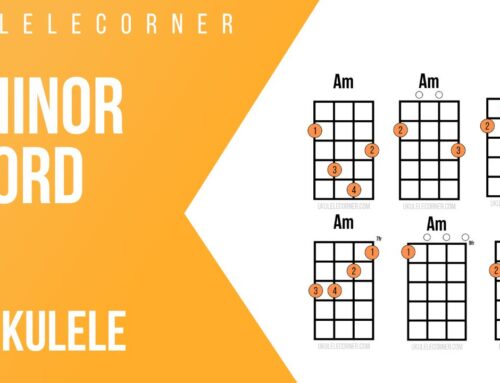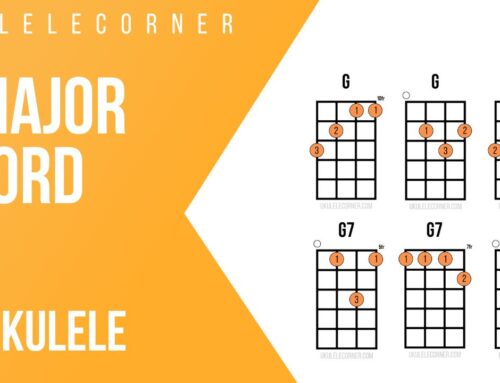Right-hand technique has a wide versatility on the ukulele and different approaches can create different sounds. This versatility in the right hand can be used to play many genres of music on the ukulele.
The Versatility of the Right Hand
The Thumb
There are many ways to play the ukulele with the right hand from strumming to fingerstyle. Using the thumb is a great place to start as you embark on your exploration of the possibilities. I remember learning ukulele at Makawao Elementary School on Maui in the fifth grade. Bla Pahinui even taught an after school session which was great inspiration for me. We learned melodies and basic chords by picking and strumming with the thumb for quite a while before using the other right hand fingers.
Thumb Strum demonstration
The flesh of the thumb brushing downward across the strings producing a soft and warm sound that is often perfect for accompaniment. Basic melody notes are easy to play with a consistent motion of the thumb moving downward. Let your fingers slightly cup around the upper bought of the ukulele near the place where the neck joins the body. This holds the instrument in place as you play either single-note melodies or strum. You can move your hand over the sound hole and slightly over the fingerboard to get a nice full, sound.
Thumb for Melody demonstration
Keep your thumb relaxed and bent back slightly like you are giving a “thumbs up.” The tip joint remains slightly bent back as you strum or pick a single string. I like to call this “banana thumb.” Bending the tip joint in will often get in the way of the other fingers and can cause tension in the hand. Move the thumb in a circular direction from the back joint. You may also move the entire forearm when strumming. Eventually the thumb can also move upward for up strums and picking the string from down to up. This can be clumsy and produce an unbalanced sound when first tried and takes time to smooth out.
The Index Finger
Thumb and Index Strum demonstration
This is where the other fingers can join in to help out. The first finger to add to the mix is the index finger. It can play the up strums and pick notes up after the thumb plays down. This helps works great with faster tempos and more complex rhythms. There are two basic playing positions with the right hand that are often used when using this combination for the thumb and index fingers. The first is to extend the index finger straight out in front of the thumb from the position of the fingers cupping the upper bought. The thumb can move towards the index finger as it moves down and the other fingers can remain touching the soundboard of the ukulele. You can use the flesh of the tip joint on each finger to get a warm sound. When strumming, the whole forearm can move. A nice snap through the strings can happen when strumming with a rotating motion of the forearm and slight motion moving from the elbow. Most of the motion comes from the forearm and just a touch of motion from the elbow adds more attack.
Index Strum with Back of Nail demonstration
To get more volume and brightness, the index finger can strum up and down. Curve the finger to a “C” shape like the needle of a record player. The fingernail will now make contact with the string which adds volume and brightens the sound. The same rotation of the forearm and slight movement from the elbow joint also works great with this finger. The other fingers can either extend straight to or curve into the hand the stay out of the way. I prefer extending the fingers most of the time.
Alternating Index and Middle Fingers
Alternating i & m demonstration
The index finger can also play repeated melody notes moving in a upward direction but gets limited like the thumb with at fast tempos. This is where a set up similar to classical guitar using alternate fingering between index, middle, and ring fingers comes in. The most common choice is to alternate between the index and the middle finger. To set the hand up for this, make a “C” shape with all the fingers like we did with the left hand but now extend the thumb out like giving the “thumbs up” sign. Now the thumb will clear the index finger when playing so there is more independence. Curve the wrist just slightly to the right but still play at a diagonal angle to the strings. There should be a straight line from the elbow to to the index finger. Curving the wrist any further to the right can cause tension in the hand.
With this hand set up try alternating the index and middle fingers on the high string. Like taking steps while walking, one finger moves in while the other moves out. There is an immediate exchange of energy each time the fingers move. Clear the other strings and move the fingers from the back knuckle towards the palm. You can practice this with all the fingers by simply making a relaxed fist from the “C” shape with the thumb extending out from the hand to stay out of the way. Each individual finger will move in the same way towards the palm. You can practice a full follow through at first then minimize the motion to save energy. Think of the fingers like light switches turning off and on. The switch turns off and the finger relaxes immediately after playing the string.
Combining Thumb, Fingers, Strums, and More
Combining Fingers demonstration
When this feels comfortable, you can use different combinations of fingers across strings individually or now can any of the four strings together as well. The back of the nail of each finger can also be used from this position when strumming. Index, middle, ring, and pinky often strum down but can move up as well for variation in strumming. The fingers can move without moving the wrist or forearm similar to flamenco guitar technique or these strums can be mixed in with the basic strumming technique that moves the whole arm.
***
As you can see, the right hand can produce a wide range of sound on the ukulele. Each technique is fun to learn and will open up new possibilities to bring your music to life.
Learning to use the full versatility of the right hand to play fingerstyle ukulele is a cornerstone of Ukulele Corner Academy. Join UC Academy today!




Good stuff…thank you.